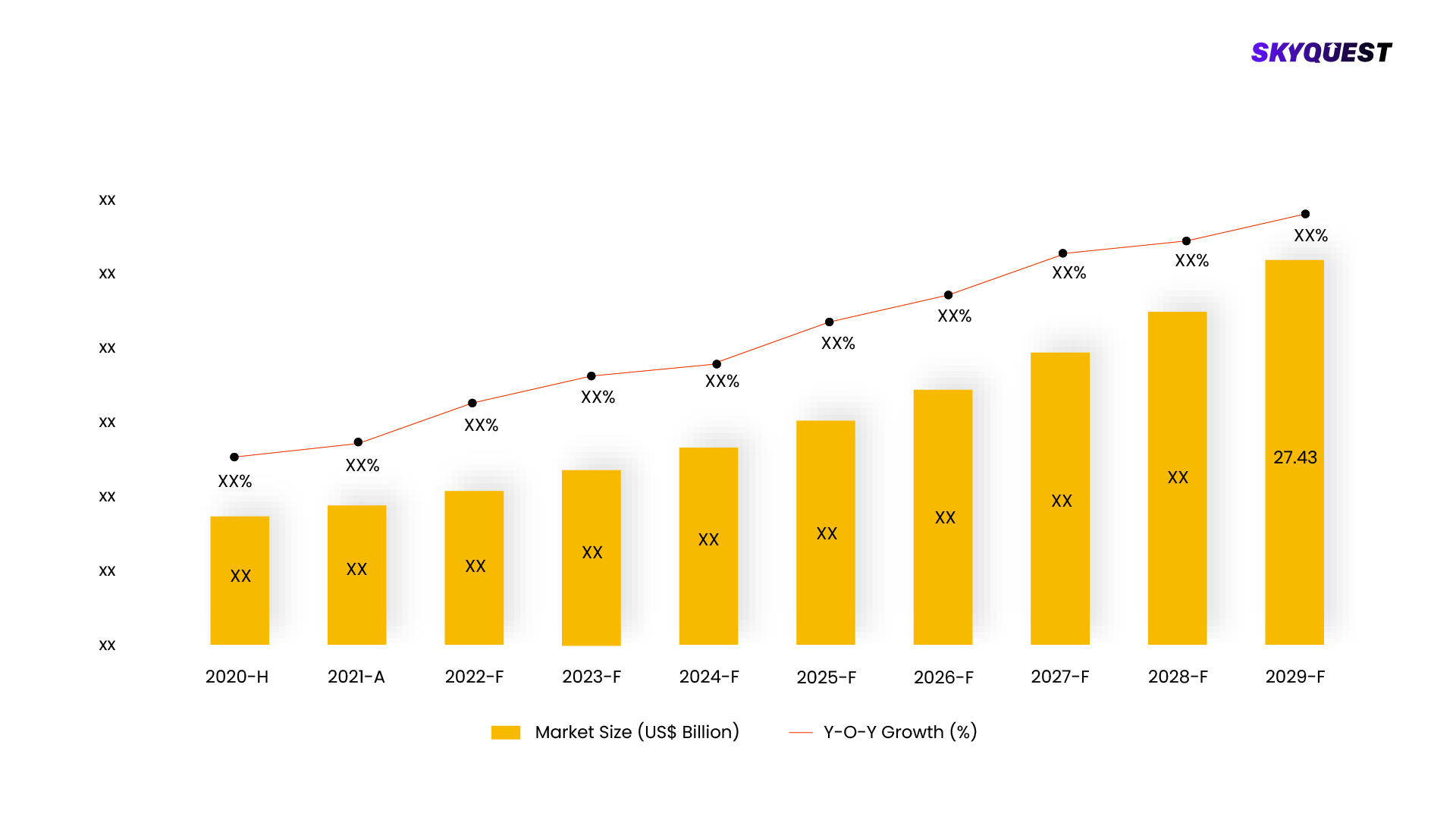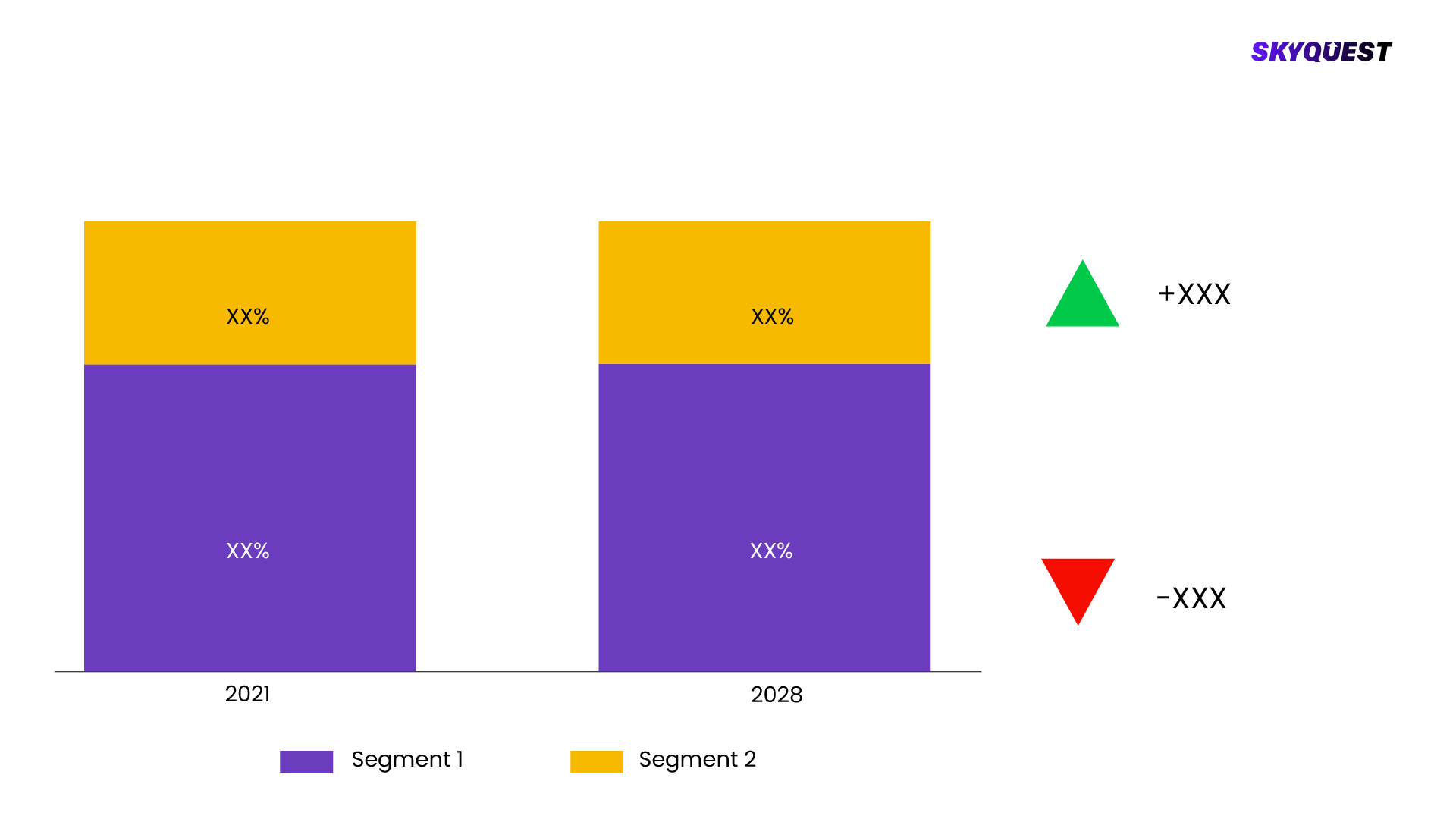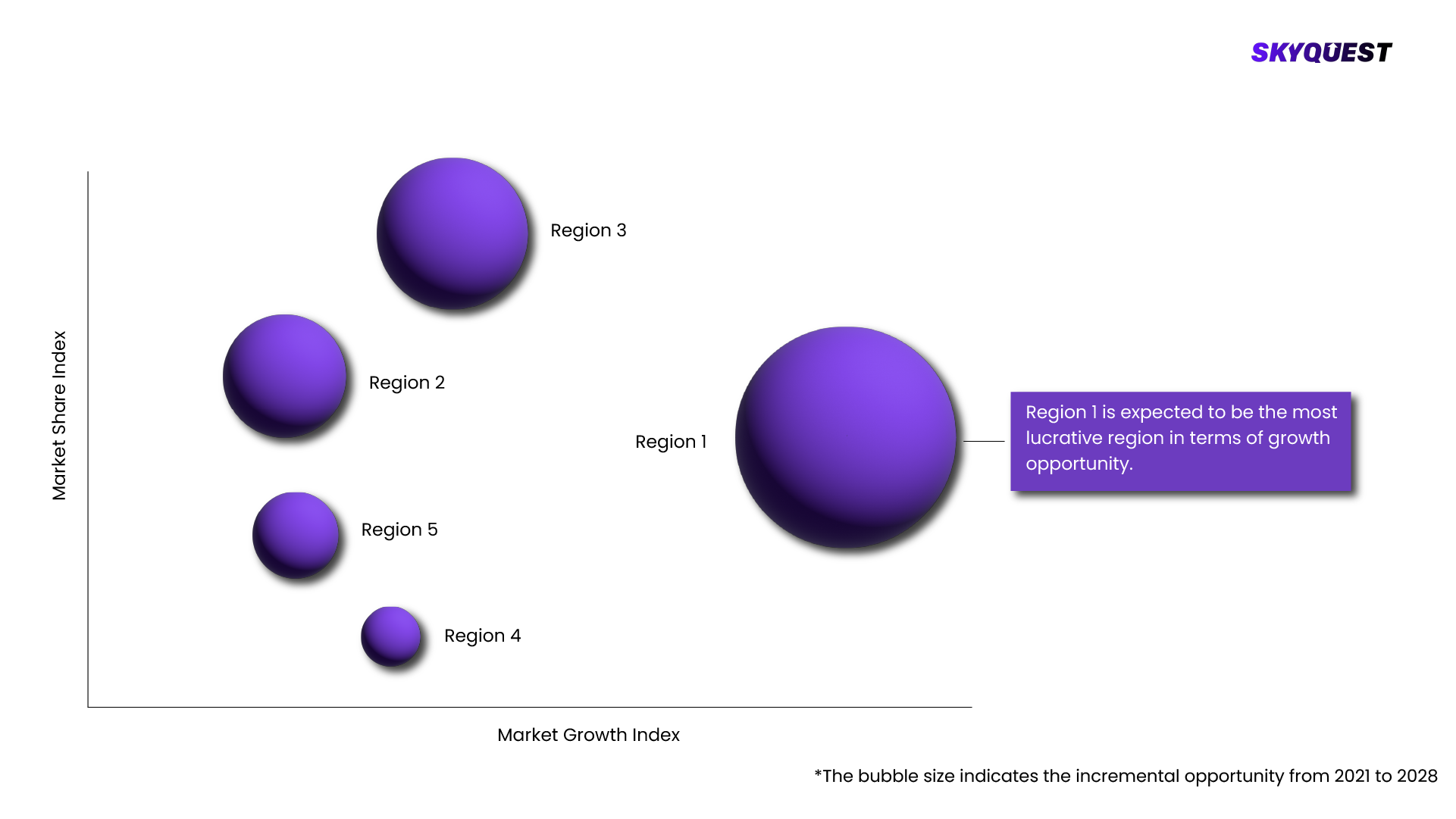
Plant-based Food Market
Report ID: UCMIG30I2256

Report ID:
UCMIG30I2256 |
Region:
Global |
Published Date: Upcoming |
Pages:
165
|Tables:
0
|Figures:
0
The global plant-based food market has experienced remarkable growth and is expected to witness continued expansion in the coming decade. In 2022, the market size reached USD 42.8 billion, and it is projected to reach a substantial value of around USD 99.7 billion by 2032, indicating a significant CAGR of 8.82% during the forecast period from 2023 to 2032. Several factors contribute to this growth trajectory. Firstly, there has been a noticeable shift in consumer preferences towards healthier and more sustainable dietary choices, with a growing awareness of the environmental impact of conventional animal-based food production. Additionally, advancements in food technology have led to the development of innovative plant-based products that closely mimic the taste, texture, and nutritional profile of traditional animal-derived foods, thereby appealing to a broader consumer base. Furthermore, increased investment and R&D activities in the plant-based food industry have led to improved supply chains, expanded distribution networks, and competitive pricing, making these products more accessible to consumers globally. As governments and regulatory bodies increasingly support sustainable and environmentally friendly practices, the plant-based food market is likely to continue its upward trajectory, offering ample opportunities for companies operating in this sector to thrive and capitalize on the growing demand.

This report is being written to illustrate the market opportunity by region and by segments, indicating opportunity areas for the vendors to tap upon. To estimate the opportunity, it was very important to understand the current market scenario and the way it will grow in future.
Production and consumption patterns are being carefully compared to forecast the market. Other factors considered to forecast the market are the growth of the adjacent market, revenue growth of the key market vendors, scenario-based analysis, and market segment growth.
The market size was determined by estimating the market through a top-down and bottom-up approach, which was further validated with industry interviews. Considering the nature of the market we derived the Packaged Foods & Meats by segment aggregation, the contribution of the Packaged Foods & Meats in Food, Beverage & Tobacco and vendor share.
To determine the growth of the market factors such as drivers, trends, restraints, and opportunities were identified, and the impact of these factors was analyzed to determine the market growth. To understand the market growth in detail, we have analyzed the year-on-year growth of the market. Also, historic growth rates were compared to determine growth patterns.
The Plant-based Food Market is segmented by Type, Source, Nature, Distribution Channel. We are analyzing the market of these segments to identify which segment is the largest now and in the future, which segment has the highest growth rate, and the segment which offers the opportunity in the future.

Plant-based Food Market is being analyzed by North America, Europe, Asia-Pacific (APAC), Latin America (LATAM), Middle East & Africa (MEA) regions. Key countries including the U.S., Canada, Germany, France, UK, Italy, Spain, China, India, Japan, Brazil, GCC Countries, and South Africa among others were analyzed considering various micro and macro trends.

SkyQuest's expert analysts have conducted a risk analysis to understand the impact of external extremities on Plant-based Food Market. We analyzed how geopolitical influence, natural disasters, climate change, legal scenario, economic impact, trade & economic policies, social & ethnic concerns, and demographic changes might affect Plant-based Food Market's supply chain, distribution, and total revenue growth.
To understand the competitive landscape, we are analyzing key Plant-based Food Market vendors in the market. To understand the competitive rivalry, we are comparing the revenue, expenses, resources, product portfolio, region coverage, market share, key initiatives, product launches, and any news related to the Plant-based Food Market.
To validate our hypothesis and validate our findings on the market ecosystem, we are also conducting a detailed porter's five forces analysis. Competitive Rivalry, Supplier Power, Buyer Power, Threat of Substitution, and Threat of New Entry each force is analyzed by various parameters governing those forces.
The Plant-based Food Market is being analyzed by SkyQuest's analysts with the help of 20+ scheduled Primary interviews from both the demand and supply sides. We have already invested more than 250 hours on this report and are still refining our date to provide authenticated data to your readers and clients. Exhaustive primary and secondary research is conducted to collect information on the market, peer market, and parent market.
Our cross-industry experts and revenue-impact consultants at SkyQuest enable our clients to convert market intelligence into actionable, quantifiable results through personalized engagement.
| Report Attribute | Details |
|---|---|
| The base year for estimation | 2021 |
| Historical data | 2016 – 2022 |
| Forecast period | 2022 – 2028 |
| Report coverage | Revenue forecast, volume forecast, company ranking, competitive landscape, growth factors, and trends, Pricing Analysis |
| Segments covered |
|
| Regional scope | North America, Europe, Asia-Pacific (APAC), Latin America (LATAM), Middle East & Africa (MEA) |
| Country scope | U.S., Canada, Germany, France, UK, Italy, Spain, China, India, Japan, Brazil, GCC Countries, South Africa |
| Key companies profiled |
|
| Customization scope | Free report customization (15% Free customization) with purchase. Addition or alteration to country, regional & segment scope. |
| Pricing and purchase options | Reap the benefits of customized purchase options to fit your specific research requirements. |
Executive Summary
Market overview
Parent Market Analysis
Market overview
Market size
KEY MARKET INSIGHTS
COVID IMPACT
MARKET DYNAMICS & OUTLOOK
Market Size by Region
KEY COMPANY PROFILES
For the Plant-based Food Market, our research methodology involved a mixture of primary and secondary data sources. Key steps involved in the research process are listed below:
1. Information Procurement: This stage involved the procurement of Market data or related information via primary and secondary sources. The various secondary sources used included various company websites, annual reports, trade databases, and paid databases such as Hoover's, Bloomberg Business, Factiva, and Avention. Our team did 45 primary interactions Globally which included several stakeholders such as manufacturers, customers, key opinion leaders, etc. Overall, information procurement was one of the most extensive stages in our research process.
2. Information Analysis: This step involved triangulation of data through bottom-up and top-down approaches to estimate and validate the total size and future estimate of the Plant-based Food Market.
3. Report Formulation: The final step entailed the placement of data points in appropriate Market spaces in an attempt to deduce viable conclusions.
4. Validation & Publishing: Validation is the most important step in the process. Validation & re-validation via an intricately designed process helped us finalize data points to be used for final calculations. The final Market estimates and forecasts were then aligned and sent to our panel of industry experts for validation of data. Once the validation was done the report was sent to our Quality Assurance team to ensure adherence to style guides, consistency & design.
Customization Options
With the given market data, our dedicated team of analysts can offer you the following customization options are available for the Plant-based Food Market:
Product Analysis: Product matrix, which offers a detailed comparison of the product portfolio of companies.
Regional Analysis: Further analysis of the Plant-based Food Market for additional countries.
Competitive Analysis: Detailed analysis and profiling of additional Market players & comparative analysis of competitive products.
Go to Market Strategy: Find the high-growth channels to invest your marketing efforts and increase your customer base.
Innovation Mapping: Identify racial solutions and innovation, connected to deep ecosystems of innovators, start-ups, academics, and strategic partners.
Category Intelligence: Customized intelligence that is relevant to their supply Markets will enable them to make smarter sourcing decisions and improve their category management.
Public Company Transcript Analysis: To improve the investment performance by generating new alpha and making better-informed decisions.
Social Media Listening: To analyze the conversations and trends happening not just around your brand, but around your industry as a whole, and use those insights to make better Marketing decisions.
The market for Plant-based Food was estimated to be valued at US$ XX Mn in 2021.
The Plant-based Food Market is estimated to grow at a CAGR of XX% by 2028.
The Plant-based Food Market is segmented on the basis of Product Type, Source, Distribution Channel, Geography.
Based on region, the Plant-based Food Market is segmented into North America, Europe, Asia Pacific, Middle East & Africa and Latin America.
The key players operating in the Plant-based Food Market are sights, The plant-based food market size was reached at USD 42.8 billion in 2022 and it is expanding by around USD 99.7 billion by 2032, growing at a CAGR of 8.82% from 2023 to 2032., Key Points:, By geography, the Europe region hold the maximum market share from 2023 to 2032., By product type, the dairy alternatives segment will represent the maximum share of the market., By source, the soy segment holds the largest share of the market., By distribution channel, The HoReCa segment will represent the highest share of the market., Plant-based foods are dairy-free or meat-free foods developed or prepared from plant-based sources. Meat alternatives are goods that taste, smell, and look like genuine meat yet are healthy than meat. They are typically made up of materials like soy, wheat, peas, and others. Plant-based foods are packed with protein, minerals, and nutrients, and their popularity is expanding rapidly. Due to its high levels of nutrients and environmentally friendly character, the plant-based meal industry is expected to rise steadily in the future years. Recognizing the rising acceptability of plant-based meals and food, several firms are producing plant-based food items with clean-label and plant-based components. However, the rising expense of plant-based meals is likely to stifle expansion, particularly in nations with low consumer per capita income. , Growth Factors, The significant factors which are leading to the growth of the plant-based food market are the increase of vegan and vegetarian populations interested in eating clean labeling products and food products that are made from plant sources. An increase in lactose intolerance in the population is another factor that will contribute to the growth of the market., The various advantage of the use of plant-based food for individuals is pushing the demand of the plant-based food market. , The rise in vegan population, The rise in lactose intolerant population, Key Market Drivers, The rise in the vegan population: A vegan is someone who does not consume any food products that are derived from an animal source. With growing awareness of animal cruelty, veganism has grown as a movement. This trend has resulted in a rise in the amount of money that individuals are ready to spend on vegan items. According to a vegan society-commissioned report, the number of vegans in the UK doubled between 2014 and 2018. Vegans made up around 1.16% of the population in 2019, and veganism was introduced in the UK. The surge in the vegan population has increased interest in plant-based foods. According to a poll commissioned by the UK government, the majority of vegans in the country are relatively new to the lifestyle, with 63% having begun in the previous five years. Furthermore, the vast majority of British vegans (81%) migrated to vegetarianism, many of whom have been eliminating meat from their daily meals., Increase in lactose-intolerant population: Lactose intolerance is characterized by a reduced capacity to digest lactose. Lactose intolerance in adults is caused by the decrease in the function of the LCT gene, which implies that people may have increased difficulty in digesting lactose as they advance in age. According to National Centre for Biotechnology Information (NCBI), lactose intolerance affects around 65% of the adult human population. It causes bloating, nausea, vomiting, and diarrhoea prompting to seek lactose-free plant-based foods in the market. The rise in the number of lactose-intolerant people throughout the globe has consequently contributed towards the growth of plant-based foods. Increase in per capita disposable income: per capita has witnessed a strong growth rate over the past few years, particularly in emerging nations. An increase in urbanization, growth in population, and surge in the rate of female participation in the labor force in many developing and developed markets has encouraged the adoption of convenience-oriented lifestyles, making plant-based foods more desirable. The increase in the middle-class population and rise in personal disposable income is having a positive impact on the plant-based food market. The lifestyle of people in recent years have been improved to an extent and have been changed drastically in countries like India and China. The growth in the middle-class population has been expected to surge the demand for the plant-based food market in the upcoming years., Key Market Challenges, High prices of plant-based foods impede market growth: Since plant-based goods are intended to be used for a longer period of time, they require specific care at every step of production. Advanced processes are necessary for these items during phases such as manufacture, packaging, and distribution. Its whole procedure needs experienced supervision and contemporary equipment. These items are expensive because of the complex procedures involved and the high level of oversight required. According to the Good Food Institute, those who buy plant-based foods have a greater basket ring, spending 61% more than the typical shopper, and 37% of plant-based meat purchaser households make more than $100,000 each year. Because of the high pricing of the items, it is expensive for the populace to purchase plant-based seafood products, which can stifle market growth. The inability of plant-based seafood to mimic original seafood taste: Plant-based seafood is unable to mimic the taste of original seafood which restrains the growth of the market. According to the report of the good food Institute, 27% of people don’t use plant-based meat substitutes just because they don’t like the taste, whereas 73% of consumers agree that plant-based meat should mimic the taste of meat. Manufacturers are innovating to make plant-based seafood taste similar to original seafood which may help in overcoming this restrain., Key Market Opportunities, To make most of the opportunity’s vendors are advised to focus on growth prospects in the fastest-growing segments while being rigid in the slow growing segment. , Strong branding and promotion to entice the consumer’s interest, Technological advancement in plant-based foods., Segments Insight, Product Type Insights, On the basis of product type, plant-based food is segmented into dairy alternatives, meat alternatives, seafood alternatives, baked goods and confectionery, RTD beverages, RTE meals, and others. The dairy alternatives category will represent the majority share of the plant-based food industry., The growing lactose-intolerant population, growing moral considerations among consumers about animal exploitation in current dairy farming techniques, and the nutritive value given by plant-based dairy products all contribute to this segment's substantial market share., Source Insights, On the basis of source, plant-based food is segmented into soy, wheat, peas, canola, lentil, and others. The soy category will represent the majority share of the plant-based food industry. The cardiovascular benefits of soy-based alternative seafood are fuelling the demand for plant-based seafood among the adult and geriatric populations., Distribution Channel Insights, On the basis of distribution channel, the HoReCa category will represent the majority share of the plant-based food industry. The growth of this segment is attributable to rapid urbanization, rising disposable income, and growing penetration of hotels, restaurants, and cafes across the globe. , The Asia-Pacific is anticipated to provide lucrative growth opportunities for the HoReCa segment. Nations such as India, China, and Indonesia are still developing and hotels and restaurants have a lot of scope to serve the huge population of these developing nations., Regional Insights, On the basis of geography, the plant-based food market has been expected to experience the majority of the market share and market growth from Europe during the forecast period. Europe is the most lucrative plant-based seafood market region, holding the highest growth potential. Europe represents the most profitable plant-based foods market region, with the most potential for expansion. According to the European Union (Europa.eu), sales of plant-based meat and seafood substitutes have increased dramatically in Europe over the last two years, with Germany leading the way with a 226% increase, trailed by Austria with an 82% increase. , In the last two years, plant-based meat and seafood sales in Romania increased by 154%, whereas sales in France increased by 100%. Germany was the top consumer of plant-based seafood in 2021, accounting for 14.6% of the market, followed by the United Kingdom (11.0%) and France (9.8%)., Recent Developments, Danone announced the new dairy & plants mix infant formula on July 5th, 2022, to satisfy parents' demand for the correct dietary alternatives for a vegetarian, flexible, and plant-based diet while meeting their baby's unique nutritional needs. Danone has retained dominance in 50 decades of scientific breast milk research and plant-based foods and has produced this innovative dairy and plant-based infant formula formulation via well-known brands such as Alpro and Silk. Nestle introduced plant-based minced, ground meat and an upgraded version of the fantastic burger, in various European nations like Germany, Norway, Austria, and Sweden in August 2019. On September 8, 2020, India created vegan food safety guidelines, including the creation of a new emblem to identify vegan food packs and proper registration for vegan food makers. The proposed Food Safety and Standards (Vegan Food) Regulations 2021 were developed by the Food Safety and Standards Authority of India (FSSAI). , For the very first time in India, the proposed laws identified vegan food and provided safety restrictions and labeling criteria to identify vegan food items., KEY MARKET SEGMENTS, By Product Type, Dairy Alternatives, Meat Alternatives, Seafood Alternatives, Baked Goods and Confectionery, RTD Beverages, RTE Meals, Others, By Source, Soy, Wheat, Pea, Canola, Lentil, Others, By Distribution Channel, Supermarkets and Hypermarkets, Specialty Stores, HoReCa, Convenience Stores, Online Sales, By Geography, North America, Europe, Asia-Pacific, Latin America, The Middle East and Africa, KEY MARKET PLAYERS, Bayer AG, Abbott, Koninklijke DSM N.V., DuPont., Amway, The Nature's Bounty Co., GlaxoSmithKline plc., Nestlé, RiceBran Technologies, Mead Johnson & Company, LLC., Medifast, Inc., Premier Nutrition Corporation, TOOTSI IMPEX Inc., U.S. Spice Mills, Inc., Health Food Manufacturers' Association, NOW Foods, Glanbia PLC, Herbalife International of America, Inc. , Bionova , Puris, Ingredion GmbH, Morning Star Farms, Sotexpro, Tyson Food, Inc., Glanbia Plc, Ocean Hugger Foods, Good Catch Foods, Impossible Foods, Inc., New Wave Foods , Sophie's Kitchen, Inc., Gardein, Quorn (Monde Nissin Corporation).
Want to customize this report? This report can be personalized according to your needs. Our analysts and industry experts will work directly with you to understand your requirements and provide you with customized data in a short amount of time. We offer $1000 worth of FREE customization at the time of purchase.

Report ID: UCMIG30I2256
sales@skyquestt.com
USA +1 351-333-4748